The Ultimate Guide To The Berlin Marathon
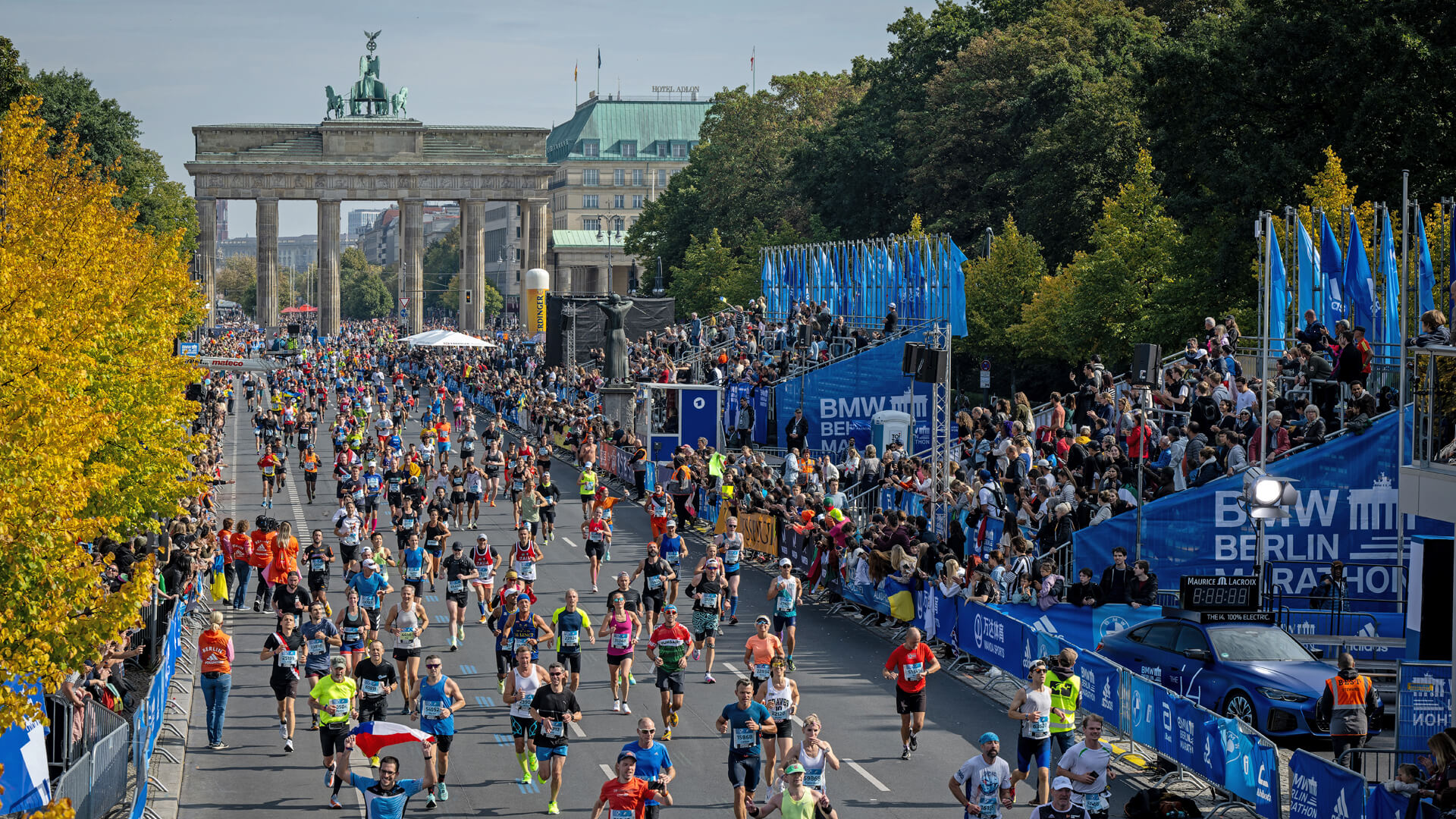
Berlin Marathon takes place in September every year and is one of the Abbott World Marathon Majors. In this ultimate runner’s guide to the BMW Berlin Marathon, we’ll cover:
- What’s special about the Berlin Marathon?
- The Berlin Marathon Expo
- All the general things to know about running the Berlin Marathon
- The start of the Berlin Marathon and the bag drop
- The Berlin Marathon course
- Supporting the Berlin Marathon
- The meeting points after the Berlin Marathon
- How to enter the Berlin Marathon
WHAT’S SPECIAL ABOUT THE BERLIN MARATHON?
As one of the original Marathon Majors, Berlin is a bucket list race for runners around the world.
The race began in 1974, making 2024 the 50th running of the Berlin Marathon. And a lot has changed in that time.
The early years of the race all took part in West Germany, but with the fall of the Berlin Wall in 1989, the route for 1990 was moved to also run into East Germany. With the race happening a few days before the country’s reunification, the 25,000 runners were among the first to officially cross the old divide.
With a new route came faster times, and that’s perhaps what Berlin is best known for among marathoners. Until Kelvin Kiptum ran 2:00:35 in Chicago in 2023, the previous eight men’s world records were all run in Berlin, and the women’s world record of 2:11:53 was set in Berlin in 2023 by Tigist Assefa. A flat course, wide streets and (usually) good weather, makes Berlin a quick race.
But it’s not just for speedy runners (the cut off is 6:15), and it’s expected that over 50,000 people will take part in 2024, coming from over 150 different countries.
Let’s begin at the Expo…
THE BERLIN MARATHON EXPO
Runners HAVE to collect their own bib and wristband – it’s not possible to send someone else to collect for you. But you can take friends and family with you as the expo is open to everyone, including non-runners.
The Expo takes place in Flughafen Templehof, south of the city. It’s an open, exposed building, so if the weather is cold or wet then wear appropriate clothes.
One good thing to note is that runners get free public transport use all weekend, and public transport is definitely the best way to the expo and the race start.
The expo is open at the following times (but is quietest all day Thursday, and Friday morning):
Thursday 26th September: 3pm to 8pm
Friday 27th September: 10am to 8pm
Saturday 28th September: 9am to 7pm
At the expo you will collect a wrist band (which you must keep on until after the race), race bib and your drop bag (if you selected one when registering). Runners must have their start card (which is emailed to you) and photo ID to collect their race materials.
The expo is very large and includes many running brands, and you have to walk through all of it to collect your bib. There’s a lot of good official merch made by adidas if you like to get tees, jackets or souvenirs from races.
Be aware that the largest bag you can take to the Expo is a standard airline hand luggage size, but there is bag storage available for all luggage sizes (priced €2 per item).
ALL THE GENERAL THINGS TO KNOW ABOUT RUNNING THE BERLIN MARATHON
These are all the random and general things that you might want to know about the actual running of the Berlin Marathon.
Distance Markers: The route has distance markers at each kilometre (but no mile markers, so if you work in miles then figure out some useful distance conversions – this might help). GPS is usually pretty accurate.
Blue Line: You’ll see a painted blue line down the road, and this is the correct measured distance of the route. Stick close to this to make sure you don’t run too far over the 42.2km.
Drinks Stations, Hydration & Energy Stations: On course, runners will find water at every point listed below, with some also having Maurten drink mix 160, tea and fruit available. There’s also Maurten gels available at 27.5km. Water refills are available for those carrying their own hydration packs and bottles.
5km: Water Only
9km: Water, Maurten 160, Tea & Fruit
12km: Water Only
15km: Water, Maurten 160, Tea & Fruit
17.5km: Water Only
20km: Water, Maurten 160, Tea & Fruit
22.5km: Water Only
25km: Water, Maurten 160, Tea & Fruit
27.5km: Water & Maurten Gel
30km: Water, Maurten 160, Tea & Fruit
32.5km: Water Only
34.5km: Water Only
36km: Water, Maurten 160, Tea & Fruit
38km: Water Only
40km: Water only
All liquid is in rigid plastic cups, which are not easy to pinch and drink from.
Personal Drinks: It’s possible to drop off your own bottles which are taken to individual refreshment points on the course at 9km, 15km, 20km, 25km, 30km and 36km.
To access this, you must hand in your containers (which cannot be glass) marked with your name, bib number and desired aid station to the “Eigenverpflegung” (“Own Refreshment”) stand (Annemarie-Renger-Str. / Otto-von-Bismarck-Allee) by 7:45am on Sunday.
If you choose to use this then make sure your bottles are very distinctive as it can be very difficult to find your own bottles (also don’t solely rely on these, just in case you cannot find your bottle). You can choose to drop off just one bottle or up to six.
Hydration Packs: These are allowed (and encouraged), as are waist belts which carry fluid. You can refill personal bottles along the course at every water station.
Pacers: Yes, there are pacers.
- Wave 1: 3:00, 3:15, 3:30
- Wave 2: 3:00, 3:15, 3:30, 3:45
- Wave 3: 3:30, 3:45, 4:00, 4:15
- Wave 4: 3:45, 4:00, 4:15, 4:30, 4:45, 5:00
On Course Toilets: There are toilets on the course after each hydration station (maybe take some of your own toilet paper if you think you might need to use these).
Sanitary Products: No updated information has been provided about sanitary products for the 2024 Berlin Marathon.
Headphones: Headphones are not permitted during the Berlin Marathon. Plenty of people still wear them, but technically the rules don’t allow them.
Slower Runners & Walkers: The time limit is 6:15 from when you cross the start line. If any participants haven’t reached 33km by 3:50pm or 38km by 4:35pm then they must continue on the footpath or can choose to be taken to the finish in the sweep bus.
Changing & Showers: Yes, there are changing rooms and hot showers at the start/finish.
Massage: There’s a free massage service at the end of the race (first come first serve). There’s also on-course massage at 25km and every 5km from there.
Finish Line Drinks and Bag: Water, tea, isotonic drink and alcohol-free beer are available after the finish line, plus fruit and salty pretzels. Finish bags contain fruit and other snacks. If there’s food or drink you know you’ll want after the race then leave it in your drop bag.
Pregnancy Deferral: Runners can defer for up to three years (with a medical certificate). There are no other deferrals.
THE START OF THE BERLIN MARATHON AND THE BAG DROP
The start of the race is on Straße des 17 Juni, in the middle of the Tiergarten. It’s accessible by many different public transport stations, so check ahead to find the best route for where you are staying.
Only runners can enter the Start/Finish area. You must wear your race wristband and race bib to access.
As the start area is in the park, a lot of the area is on grass so could be wet or muddy if there’s bad weather.
Arrival Time: The start area opens from 7am. Arrive at least an hour before your start (it can be busy and crowded, especially toilet queues, so arriving 90 minutes early is advisable).
Toilets: The toilet situation isn’t the best and there are often long lines (and a lot of people just going in the bushes, so watch out!). It’s highly recommended that you take your own toilet paper!
Drop Bags: Runners with a drop bag can hand this over in a truck corresponding to their bib number. There are lots of trucks and this is well organised. The drop bag situation at Berlin is different to other marathons and you need to pre-select this when you register for the race. Only the official drop bag can be taken with you into the Start/Finish area (no other bags are allowed other than hydration vests). Runners who do not choose the drop bag receive a poncho at the end of the race.
Space To Warm Up: Yes, there’s space to do this if that’s something you like to do.
Start Corrals: These can be chaotic and are very busy, so runners who feel anxious in these situations may wish to enter their corral either as early as possible or as the race is starting.
Start Times & Start Waves: The start of the Berlin Marathon is in four waves and your start wave and corral letter will be clearly visible on your race bib. The waves are seeded by previous marathon times and one unusual detail about this race is that if Berlin is your first marathon then you’ll be put in the last wave, regardless of your expected finish time. In previous years there has been a stand at the Expo where you can request a wave change, but you’ll need good proof of other race times (ideally a half marathon or more).
- Wave 1: 9.15am (ABCD)
- Wave 2: 9.45am (EF)
- Wave 3: 10.10am (GHJ)
- Wave 4: 10.40am (K)
Clothing Donation: If you choose to wear spare clothing to the start line then anything you leave behind will be collected and donated to people living on the street.
THE BERLIN MARATHON COURSE

Standing on the start line, which has a loud and lively atmosphere, you’ll have the Brandenburg Gate behind you and the Victory Column ahead of you. It’s a great beginning to the race, and it has one of the great finish lines in world marathons: you’ll come all the way around the city, through 10 different districts, and back to see the Brandenburg Gate. Passing beneath it is an unforgettable marathon experience, as is the final few hundred metres to the finish.
The rest of the course has plenty of stuff to look at, and there’s always new and interesting landmarks, but this isn’t a sightseeing tour of Berlin. Instead, focus on enjoying the on-course music, the wide streets and the crowd support (which is great and all around the course, but more chilled than the loud crowds at American Majors).
People know Berlin as a flat course, but there is some elevation (a gain of 73m and loss of 79m). There are some gradual inclines in the second half of the race, but they are always followed by gradual downhills, and there’s nothing concerning here.
SUPPORTING THE BERLIN MARATHON
There are grandstands at the finish and these are free to use but are popular and can be crowded, so arrive early if you plan to wait here to watch the end of the race.
The course is a loop and public transport makes it quick and easy to chase your runner around the city. Here’s a few options where you can see them three times on the course.
One thing to know: there’s an official meeting point (see below for that) but all runners exit to the north side of the Tiergarten, so plan to end up around the Hauptbahnhof or Bundestag if using public transport and meeting your runner after the race.
- Start near Rosa-Luxemburg-Platz at 10km then hop on the U2 to Bulowstraße and see your runner around 21km and then walk to 36-37km
- Go to Oranienburger Tor which is near 8km. Jump on the U6 to Mehringdamm to see runners at 19-20km. Then a 2km walk north takes you to 39-40km on the race.
- Start near 9km (Rosenthaler Platz U-Bahn) then jump on U8 to Hermannplatz at 16-17km (it’s a 15-minute journey, so plenty of time unless you’re following the elites!). Then go one stop back on U8 and change onto U1/U3 and go to Wittenburgplatz to see your runner at 35-36km.
THE MEETING POINT AFTER THE BERLIN MARATHON
You’ve finished! As you pass under the finish line just beyond the Brandenburg Gate, you’ll collect a goodie bag, pick up an alcohol-free beer if you want one, grab your drop bag or poncho, and then you’re free to leave the race village.
There’s a meeting point outside of the finish area at Paul-Löbe-Haus by the Bundestag U-Bahn. There are signs with letters from A-Z, so agree in advance with friends and family where you want to meet them.
HOW TO ENTER THE BERLIN MARATHON
Feeling inspired and want to run the Berlin Marathon?
Ballot/Lottery is the main way to enter the Berlin Marathon. Ballot information is on the Berlin Marathon website. Registration typically opens immediately after the race finishes and remains open for six weeks. Successful entries cost €205 in 2024.
There are places for time qualifiers, but you have to be a faster runner (men aged under 44 need to run 2:45, and women need 3:10). Time details here. Entry this way cost €205 in 2024.
Like most other marathons, there are also charity places and details on how to apply are on the Berlin Marathon website (fundraising commitments vary from a minimum of £1,250). And there are tour operators which have places for the Berlin Marathon. See official tour partners here.
Image ©Camera4_Tilo Wiedensohler / SCC EVENTS

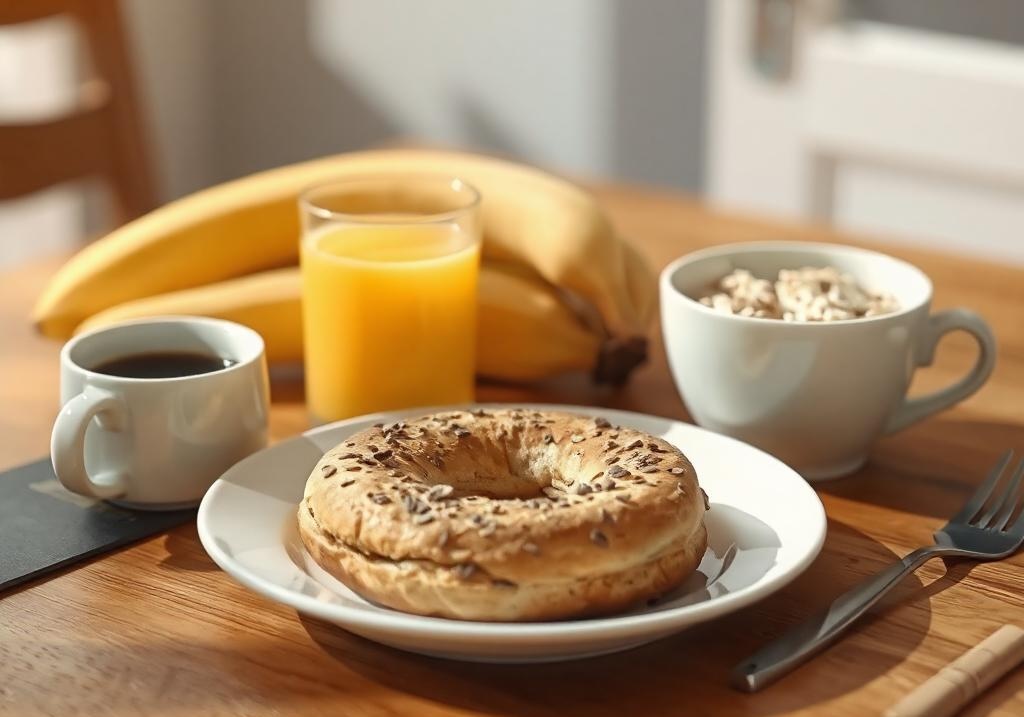
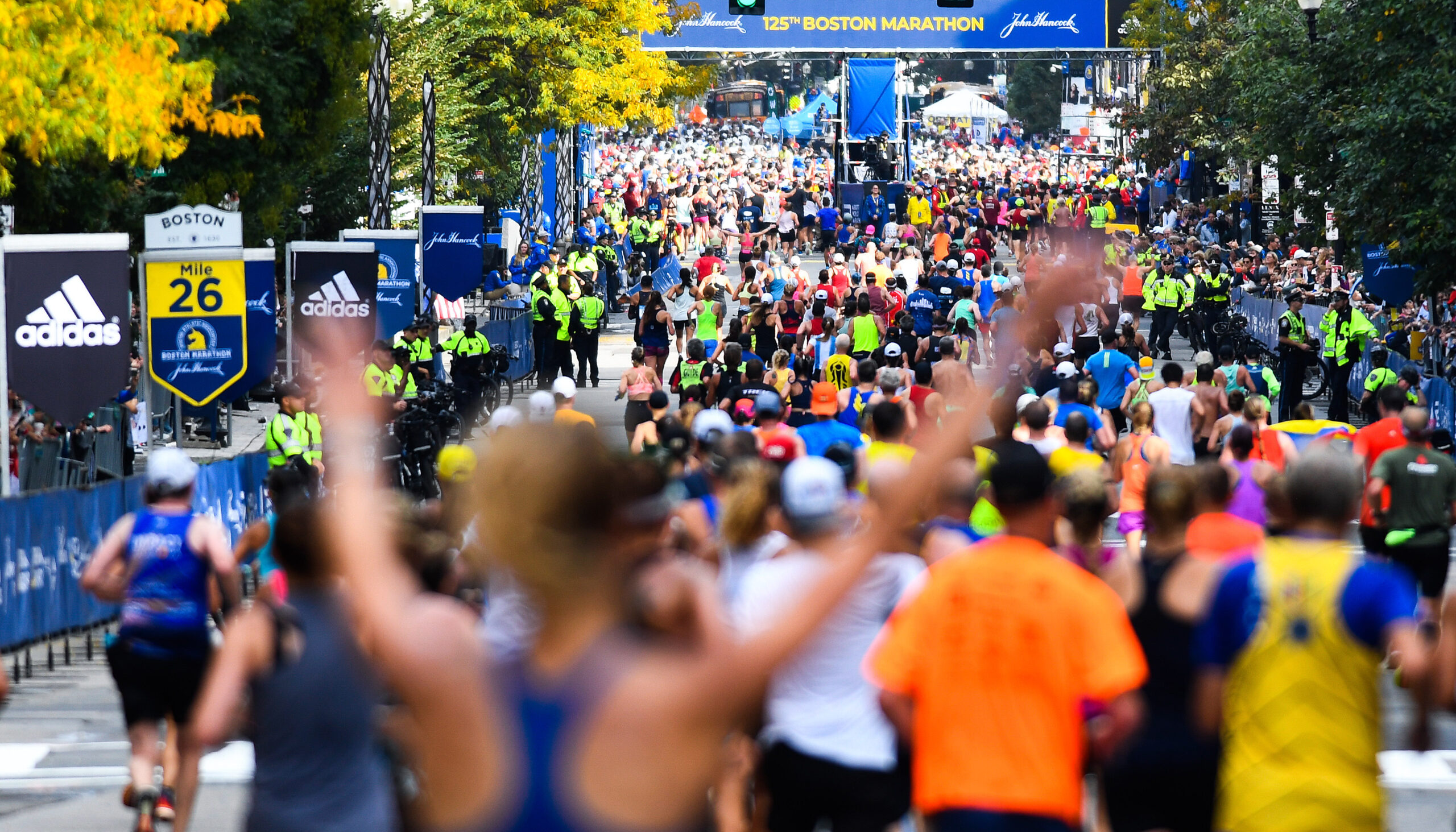
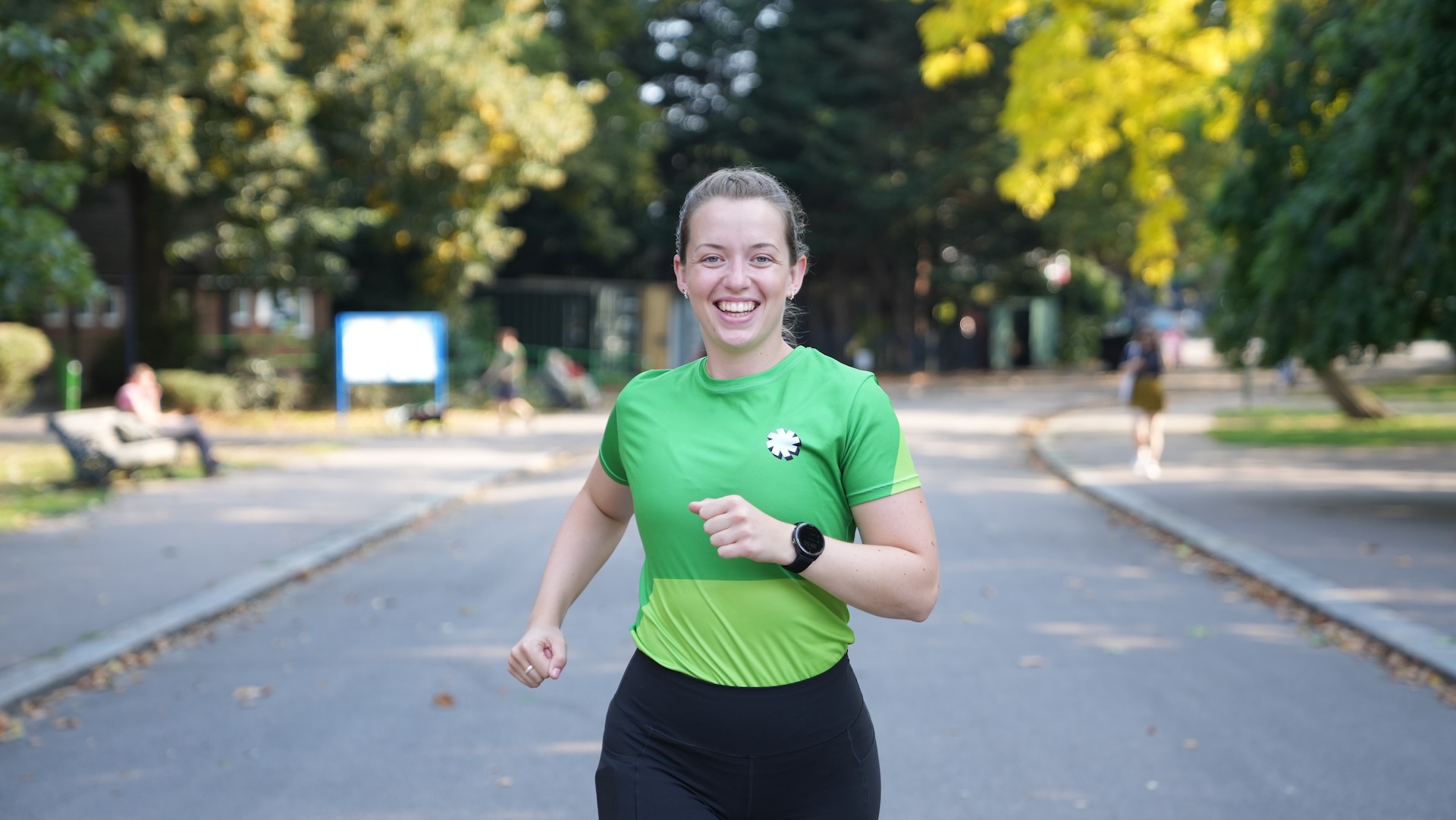
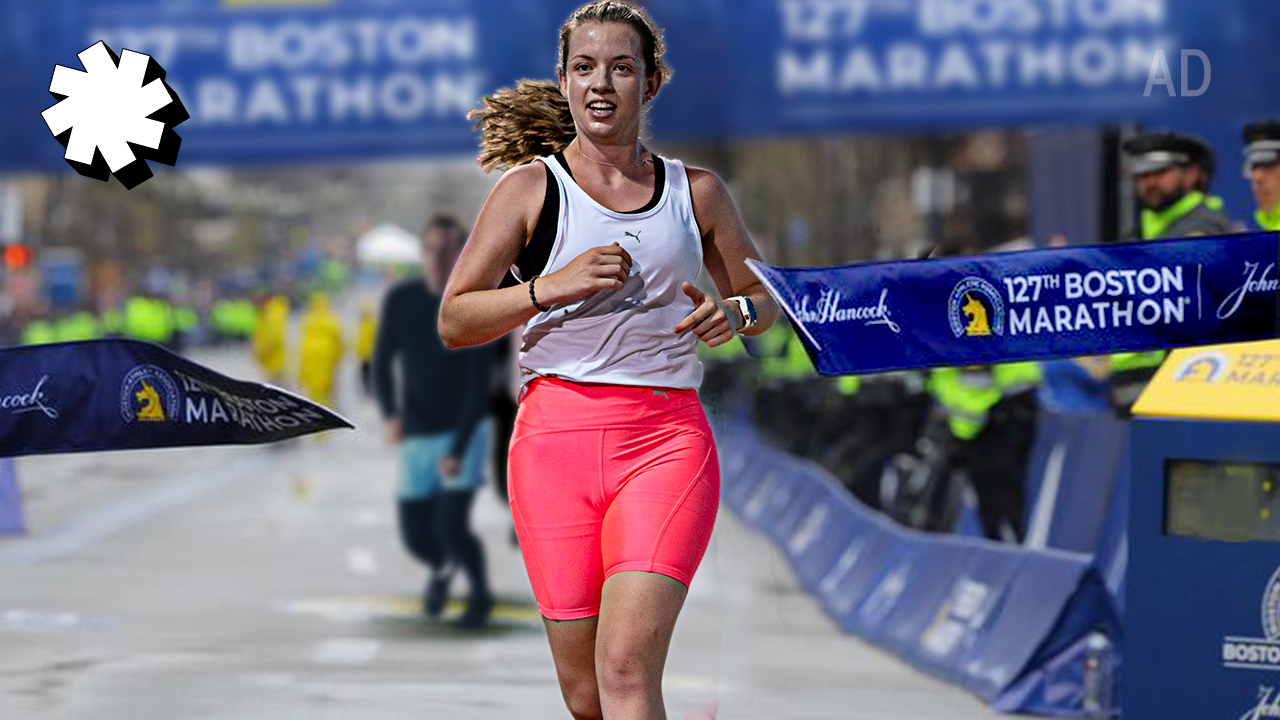
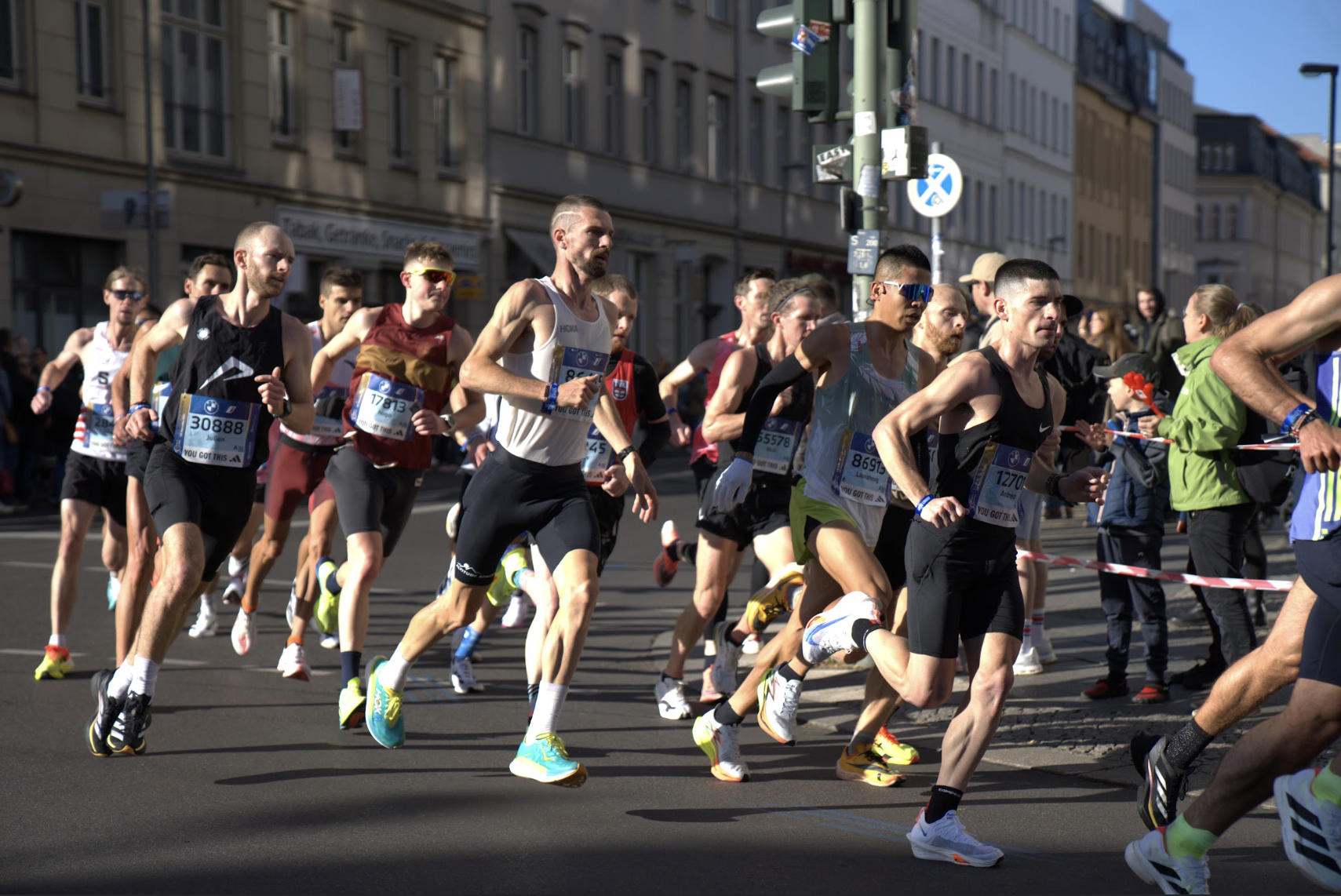
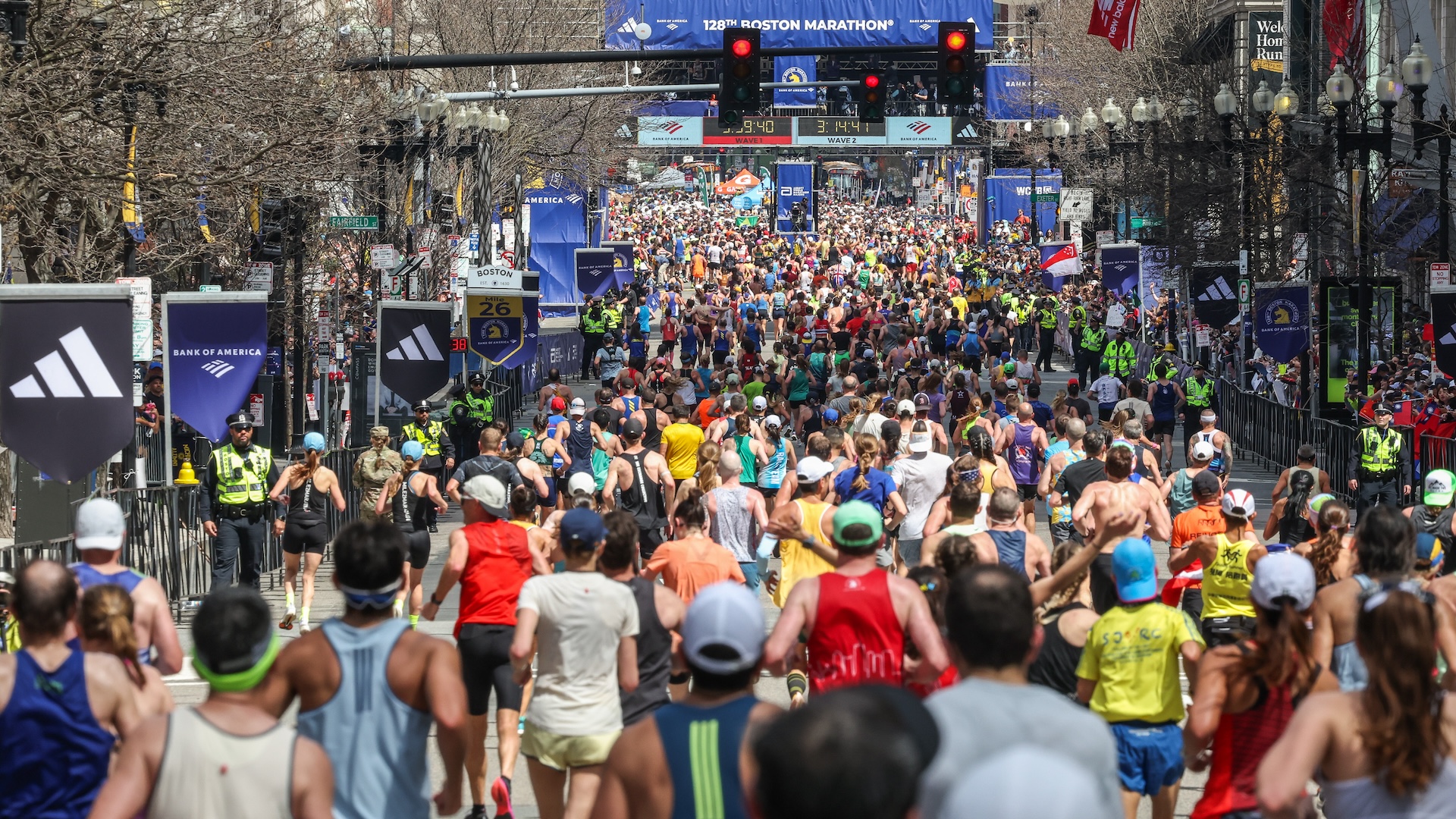




















Running News
Ingebrigtsen Stars at World Athletics Indoor Championships 2025 – Plus All The Winners!
Sam Ruthe Is First 15-Year-Old To Run A Four-Minute Mile!
Eliud Kipchoge Will Run The 2025 Sydney Marathon!